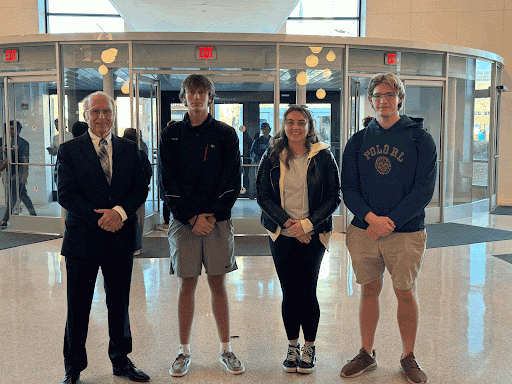UB’s Nuclear Energy is Clean Energy (NiCE) club looks to bring a nuclear engineering curriculum to UB, spread awareness about the plethora of opportunities and bring the cleanest and some of the fastest energy developments on a national scale.
The Spectrum interviewed the three co-founders of the club: senior chemical engineering major Emily Milton, sophomore civil engineering major Nikita Korolkov and sophomore aerospace/mechanical engineering major Maximus Wunderlich. The club’s advisor is Thomas G. O’Connor, President & Chief Technical Officer of Adsorption Applications.
“UB NiCE is a new club focused on the awareness of nuclear engineering in today's world and the future. We are more focused on trying to get people to understand the true possibility of nuclear engineering, and in doing so, we can help further UB’s involvement,” Korolkov said.
The club advertises itself as open to all engineers, and even applicants of the medical field. Whether you are civil, mechanical, chemical, electrical, or computer science – this club looks to give awareness about not only the possibilities of clean energy, but also job opportunities.
“Right now students are unaware that if they go on Indeed today and apply, there are multiple jobs and internships for undergraduate nuclear engineering students in the country,” O’Connor said, “it pulls in all these other disciplines.” This creates opportunities for all sorts of engineers to get involved.
UB has multiple classes within the topic of nuclear engineering, but Milton said “they're all graduate level,” and only involved with medical or physics applications, with still no focus on nuclear engineering as a whole. UB had a small nuclear reactor (SMR) on its south campus from 1960 to 1994, and was used as a material research center (BMRC). The building since then has had its fuel and waste removed in 2005 and a full demolition and decommissioning in 2014. The whole process cost $12 million.
There are currently 94 licensed and operated nuclear power plants in the U.S. — 63 of them being pressurized water reactors, and 31 of them being boiling water reactors.
UB NiCE looks to the possibility of not only bringing a degree program, and Research and Development) to UB, but they also look to the future of building more SMR’s to power upcoming UB projects.
With UB’s new Empire AI, the question was posed by O’Connor about the source of electricity. The amount of power a supercomputing center needs is dependent on its processing power, and size - but with claims that the new center will be “20 to 40 times more powerful” than the current one on Ellicott Street, the question is important.
Wunderlich weighed in saying “In 2022 globally, data centers drew about 450 terawatts of electricity. And in 2026, it's projected that data centers are going to need at least a thousand terawatts.”
“If you look at human history, everything about it is a story of energy,” Wunderlich said. “If we want to do things such as space exploration the only two sustainable energies are hydro and nuclear.” Wunderlich said that while nuclear is the future, there are negative connotations to it, which he wishes to wipe away with the creation of this club.
Wunderlich poses the growing need for large amounts of clean and sustainable energy and on a global scale. Leaving UBin the coming months to announce their plan to power this project, within their climate action plan guidelines.
UB continues to rank top-10 among U.S. colleges and universities in four of the 17 United Nations’ Sustainable Development Goals rankings, including No. 1 in Good Health and Well-Being, and No. 2 in Climate Action - with goals in their climate action plan to achieve net zero emissions by 2030.
Milton proposes to do events centered around passion projects, “Whatever clean energy, nuclear energy aspect that they really seem to like, they can talk about for five minutes,” she said. “This gives students a floor to speak their mind, students aren't exactly given the chance to, you don't really have a chance of a student to be like, hey, this is why I chose chemical engineering, or this is why I like it.”
Milton would like to build on the ideas of people's passion, she seeks to make people interested in their ideas, not just UB’s curriculum.
O’Connor is well connected within the Western NY industry, UB alumni and investors interested in energy applications. He’s looking at the possibility of bringing these people to come in and speak to club members.
At this time, UB NiCE members were also invited to speak with Kemper Lewis, dean of the School of Engineering and Applied Sciences to discuss the applications of the club and its role in the future of engineering.
UB NiCE in the coming days seeks to gain SA approval — with Wunderlich becoming the sitting president, and Korolkov Vice president. Milton will seek her PhD in nuclear engineering elsewhere, departing from the club after graduation.
The club also looks to the future of forming a chapter in the event of its popularity, like Americans for Chemical Engineering (AICHE).
The news desk can be reached at news@ubspectrum.com





